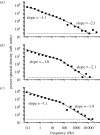Interaction of theory and experiment: examples from single molecule studies of nanoparticles
- PMID: 20123749
- PMCID: PMC3263810
- DOI: 10.1098/rsta.2009.0261
Interaction of theory and experiment: examples from single molecule studies of nanoparticles
Abstract
This article is in part the author's perspective on the revolution that has occurred in theoretical chemistry during the past half-century. In this period much of theoretical chemistry has moved from its initial emphasis on analytic treatments, resulting in equations for physical chemical and chemical phenomena, to the detailed computation of many different systems and processes. In the best sense the old and the new are complementary and their coexistence can benefit both. Experiment too has seen major developments. One of the newer types of experiment is that of single molecule studies. They range from those on small inorganic and organic nanoparticles to large biological species. We illustrate some of the issues that arise, using the topic of 'quantum dots' (QDs), and choosing a particular inorganic nanoparticle, CdSe, the most studied of these systems. Its study reflects the problems that arise in experiment and in theories in this field. The complementary nature of the conventional ensemble experiments and the new single molecule experiments is described and is illustrated by trajectories for the two types of experiments. The research in the QD field is both experimentally and theoretically a currently ongoing process, for which the answers are not fully known in spite of the large body of research. The detailed role of surface states is part of the problem. The field continues to yield new and unexpected results. In a sense this part of the article is an interim report that illustrates one analytic approach to the topic and where computer calculations and simulations can be expected to provide added insight.
Figures









References
-
- Alder B. J., Wainwright T. E. Studies in molecular dynamics II. Behavior of a small number of elastic spheres. J. Chem. Phys. 1960;33:1439–1451. doi: 10.1063/1.1731425. ( ) - DOI
-
- Alder B. J., Wainwright T. E. Decay of the velocity autocorrelation function. Phys. Rev. A. 1970;1:18–21. doi: 10.1103/PhysRevA.1.18. ( ) - DOI
-
- Chung I., Bawendi M. G. Relationship between single quantum-dot intermittency and fluorescence intensity decays from collections of dots. Phys. Rev. B. 2004;70:165 304. doi: 10.1103/PhysRevB.70.165304. ( ) - DOI
-
- Cichos F., von Borczyskowski C., Orrit M. Power-law intermittency of single emitters. Curr. Opin. Col. Int. Sci. 2007;12:272–284. doi: 10.1016/j.cocis.2007.07.012. ( ) - DOI
-
- Efros Al. L., Rosen M. Random telegraph signal in the photoluminescence intensity of a single quantum dot. Phys. Rev. Lett. 1997;78:1110–1113. doi: 10.1103/PhysRevLett.78.1110. ( ) - DOI
LinkOut - more resources
Full Text Sources
Miscellaneous

